In-the-ear hearing aids (ITE)

What are in-the-ear hearing aids?
In-the-ear hearing aids (ITE) are the most discreet hearing aid styles available. This discreet style has no external wires or tubes visible, as opposed to behind-the-ear hearing aids. ITE hearing aids are all custom-made, ensuring both a perfect fit and a discreet look.
When you select an in-the-ear hearing aid, the hearing care professional will need to take an impression or scan the inside of your ear, for a personalized fit.
Hearing aid types
3 features of hearing aids in-the-ear

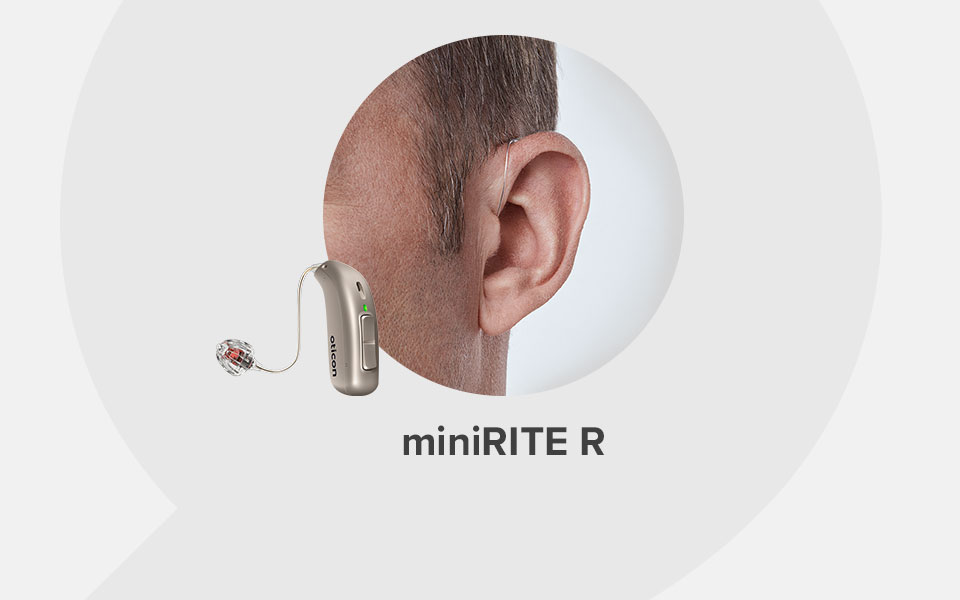


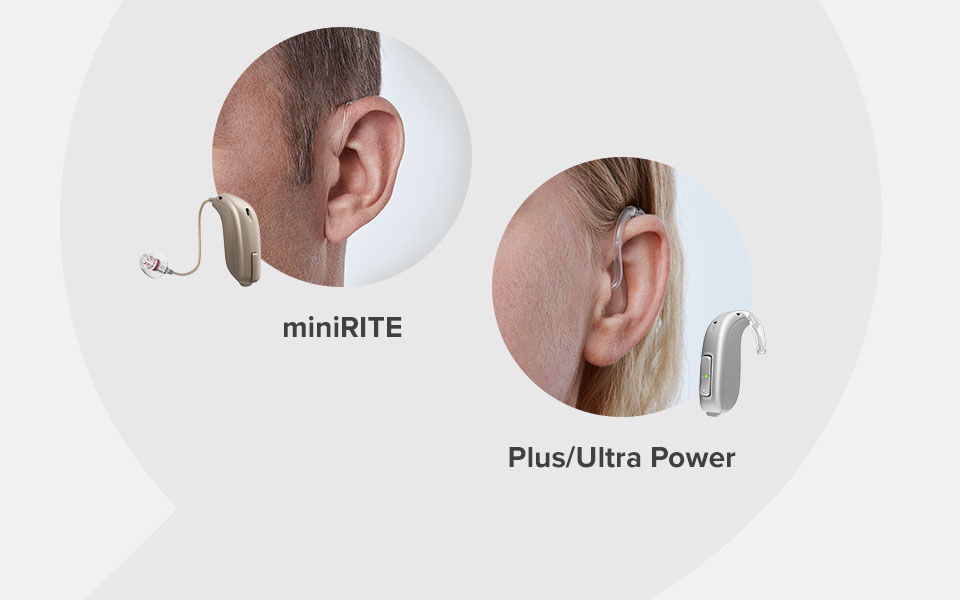


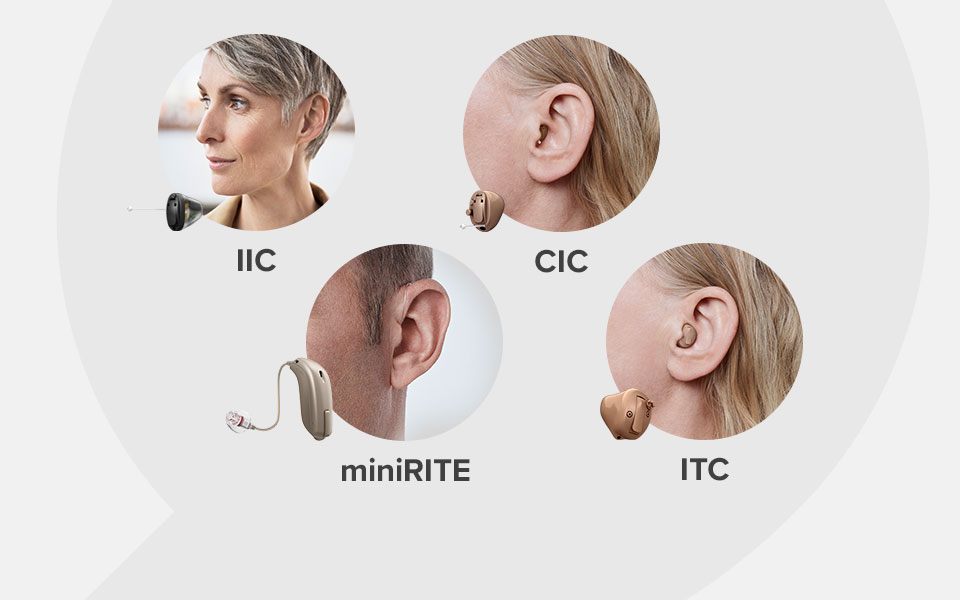

Find the Right Hearing Aid for Your Needs
Take one minute to find out which hearing aid model suits your preferences.
Your result
Based on your answers the following hearing aid types would suit your needs:
- miniRITE R
*The result of the test may only be used for guidance and is not meant to replace a more accurate measurement of your hearing abilities and needs by one of our hearing care professional.
Would you like to visit us for your free trial?
Book a FREE trialYour result
Based on your answers the following hearing aid types would suit your needs:
- miniRITE R
*The result of the test may only be used for guidance and is not meant to replace a more accurate measurement of your hearing abilities and needs by one of our hearing care professional.
Would you like to visit us for your free trial?
Book a FREE trialYour result
Based on your answers the following hearing aid types would suit your needs:
- miniRITE
- BTE Plus/Ultra Power
- In-the-canal (ITC)
*The result of the test may only be used for guidance and is not meant to replace a more accurate measurement of your hearing abilities and needs by one of our hearing care professional.
Would you like to visit us for your free trial?
Book a FREE trialYour result
Based on your answers the following hearing aid types would suit your needs:
- miniRITE
- BTE Plus/Ultra Power
*The result of the test may only be used for guidance and is not meant to replace a more accurate measurement of your hearing abilities and needs by one of our hearing care professional.
Would you like to visit us for your free trial?
Book a FREE trialYour result
Based on your answers the following hearing aid types would suit your needs:
- miniRITE R
*The result of the test may only be used for guidance and is not meant to replace a more accurate measurement of your hearing abilities and needs by one of our hearing care professional.
Would you like to visit us for your free trial?
Book a FREE trialYour result
Based on your answers the following hearing aid types would suit your needs:
- miniRITE R
*The result of the test may only be used for guidance and is not meant to replace a more accurate measurement of your hearing abilities and needs by one of our hearing care professional.
Would you like to visit us for your free trial?
Book a FREE trialYour result
Based on your answers the following hearing aid types would suit your needs:
- miniRITE
- Invisible-in-the-canal (IIC)
- Completely-in-the-canal (CIC)
- In-the-canal (ITC))
*The result of the test may only be used for guidance and is not meant to replace a more accurate measurement of your hearing abilities and needs by one of our hearing care professional.
Would you like to visit us for your free trial?
Book a FREE trialYour result
Based on your answers the following hearing aid types would suit your needs:
- Halfshell/full shell
- miniRITE
*The result of the test may only be used for guidance and is not meant to replace a more accurate measurement of your hearing abilities and needs by one of our hearing care professional.
Would you like to visit us for your free trial?
Book a FREE trialWhat are the different in-the-ear hearing aid styles?
Take a look at how the five different ITE styles fit in the ear:
Invisible-in-the-canal hearing aids
Invisible-in-the-canal hearing aids (IIC) are the smallest hearing aids available. These custom-made hearing aids fit fully inside your ear canal, making them almost, if not completely, invisible. Tiny cords are attached to the hearing aid so that you can remove them easily.
- Adapt automatically to the sound environment
- Have a discreet style
- Can be vulnerable to earwax and moisture build-up
- Are better for minimizing wind noise (due to their placement)
- Do not have a directional microphone
- Can be difficult to adjust for those with dexterity issues

Completely-in-the-canal (CIC) hearing aids
Completely-in-the-canal hearing aids (CIC) were the smallest hearing aids available before the IIC hearing aid was introduced. The CIC is still rather discreet, however, and the only visible part is typically the face plate and battery drawer.
- Are custom-made to fit discreetly inside the ear canal
- Are mostly invisible to those around you
- Can accommodate an optional button that allows you to manually control settings for different environments
- Can be vulnerable to earwax and moisture build-up
- Need adequate ventilation when they are used
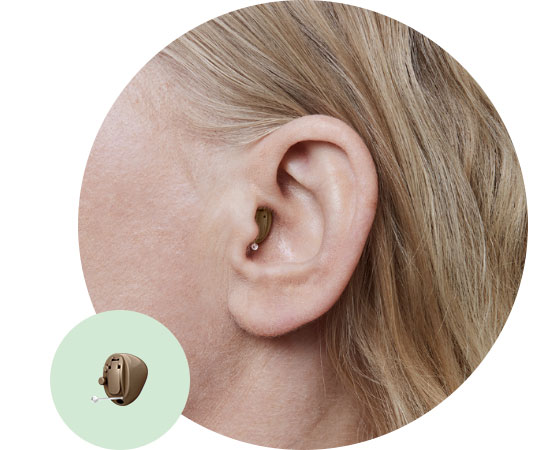
In-the-canal (ITC) hearing aids
ITC hearing aids sit in the lower third of your external ear and are custom-made to fit your ear canal shape.
- Offer slightly longer battery life than other in-the-ear styles
- Feature wireless streaming in some models
- Balance out background noise (via a directional microphone)
- Are easy to insert and remove
- Have push button controls
- Are slightly larger than completely-in-the-canal hearing aids
- Have a discreet design
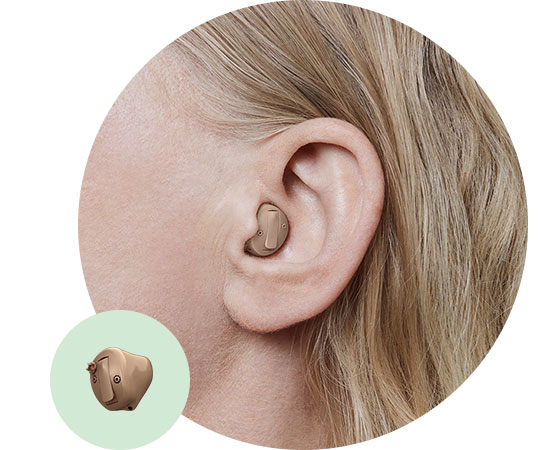
Half shell in-the-ear hearing aids
Half shell in-the-ear hearing aids are designed to fit inside half of your external ear region. The shell of the hearing aid is made to fit the shape of your ear. Half shell in-the-ear hearing aids:
- Are relatively discreet
- Have a longer battery life than in-the-canal hearing aids
- Are suitable for anyone with a more severe hearing loss
- Are a good option if you want an easy-to-handle device
- Can house additional, high-tech features

Full shell in-the-ear hearing aids
Full shell in-the-ear hearing aids are designed to fit the entire area of your external ear. These types of hearing aids are the largest of the custom models, due to the fact that they have larger amplifiers for providing greater sound amplification. The shell is custom-made to fit the shape of your ear.
- Are relatively discreet
- Have a longer battery life than in-the-canal hearing aids
- Are suitable for anyone with a more severe hearing loss
- Are a good option if you want an easy-to-handle device
- Can house additional, high-tech features
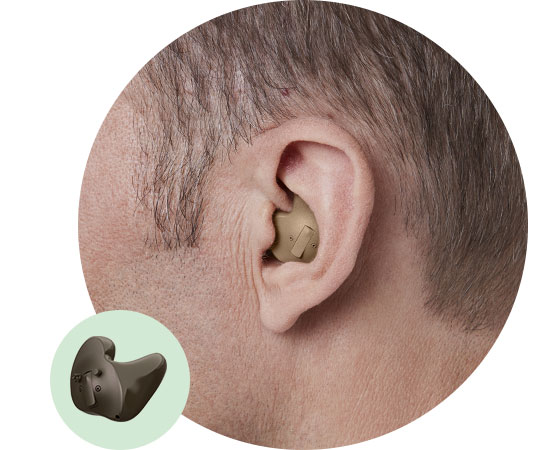
Pros and cons of in-the-ear hearing aids
In-the-ear hearing aids are ideal if a discreet style is of most importance to you. They are also a good introduction to hearing aids for first-time users, since they sit out of the way of sunglasses - and they won't fly off when taking off your sweater. Here are some pros and cons to wearing in-the-ear hearing aids:
| Pros | Cons |
| Very discreet Since these hearing aids sit inside your ear canal, they are considered to be the most discreet style available. |
Disposable batteries In-the-ear hearing aids are rarely available with rechargeable batteries. |
| Less likely to pick up wind noise Due to their placement in the ear canal, in-the-ear hearing aids are less likely to pick up wind noise. |
Most styles are not suitable for severe hearing loss These hearing aids are mostly suitable for people with mild to moderate hearing loss. |
| Comfortable with glasses They don’t get in the way of your glasses. |
Not suitable for all ear canal shapes Some ear canals may be too small to be fitted with certain in-the-ear hearing aids |



